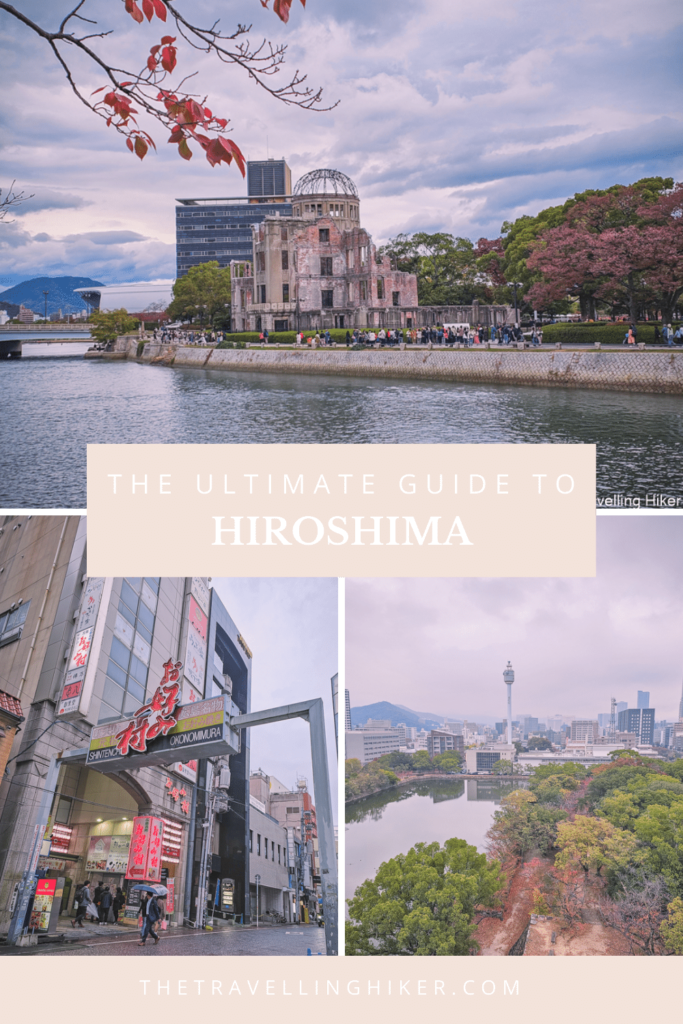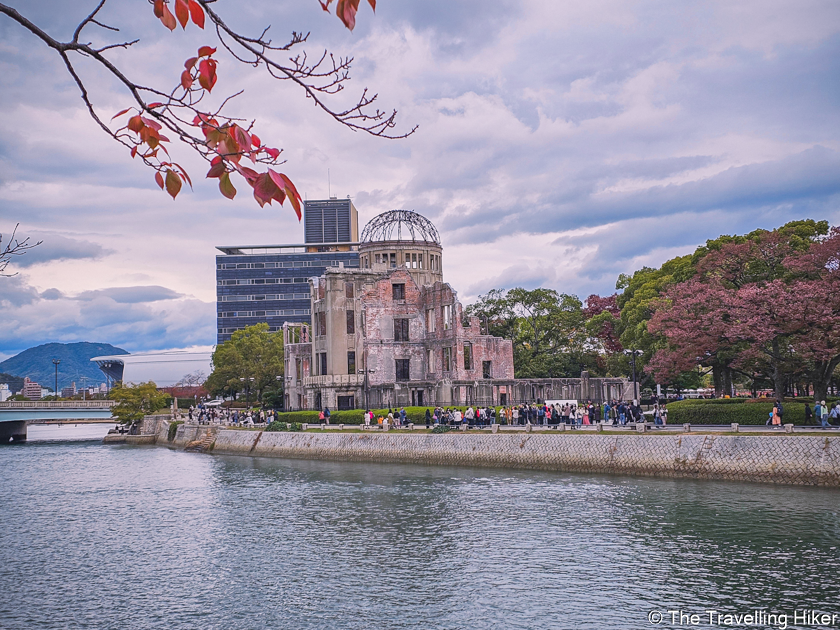The city of Hiroshima in Japan is known for one of the most tragic events in human history. Because of this or maybe because apart from this, there is not much knowledge about it, many visitors to Japan, skip it. In this guide, I will share The Ultimate Hiroshima Travel Guide, hoping to convince you to include it in your next Japan itinerary.
Yes, Hiroshima’s most famous place to visit is linked to the tragic event that happened here in 1945. However, because of this, it is all the more important to visit this city. We need to learn from our mistakes and make sure that a tragic event like this never happens again.
TABLE OF CONTENTS
HIROSHIMA
Hiroshima, located in the Japanese Chugoku region, is sadly known as the city where the first atomic bomb was dropped on August 6th, 1945. But Hiroshima is much more than this and the Peace Memorial Park that was built to remember this event. It is a city that has rebuilt from its ashes, it is a lively and respectful city and it is a place where you can eat some amazing food!
Here are some interesting facts you might not know about Hiroshima.
- Every year, on the 6th August, there is a memorial festival where lanterns with peace messages are lit and released to float down the river.
- Hiroshima has a rich culinary background. The local specialties are oysters and okonomiyaki.
- Baseball is quite popular in Hiroshima. The local team, the carps, has won the central league 9 times and the national championship 3 times.
- The tram system in this city is the largest in Japan with over 300 trams in service.
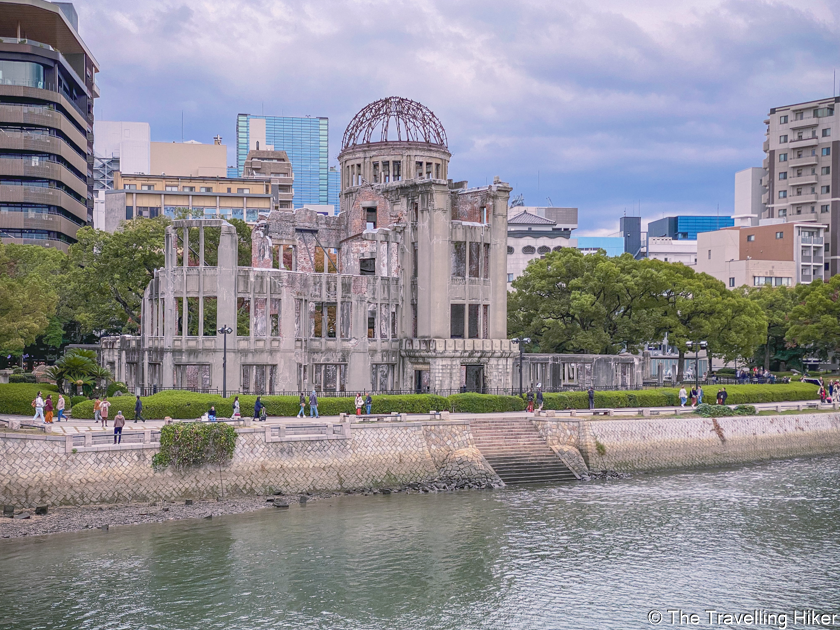
HOW TO GET TO HIROSHIMA
The easiest way to reach Hiroshima is by train. It doesn’t matter whether you are traveling from Tokyo or Kyoto, you just need to get on a Tokaido/Sanyo Shinkansen and it will take you to Hiroshima. In addition, if you have the JR Pass this ride is completely included.
However, please keep in mind the following things when booking your tickets or directly boarding a Shinkansen (if you have the JR Pass).
- The Nozomi or Mizuho Shinkansen are not fully covered with the JR Pass. If you want to take these services, you will have to pay a supplementary fee.
- Some trains go directly from Tokyo to Hiroshima (without having to change trains) but not all of them. Always double-check if your train is a direct one or if you will have to change trains in Osaka.
- From Tokyo, it will take you approximately 5 hours to reach Hiroshima. From Kyoto, it will take between 1 hour and 40 minutes to 2 hours to get there.
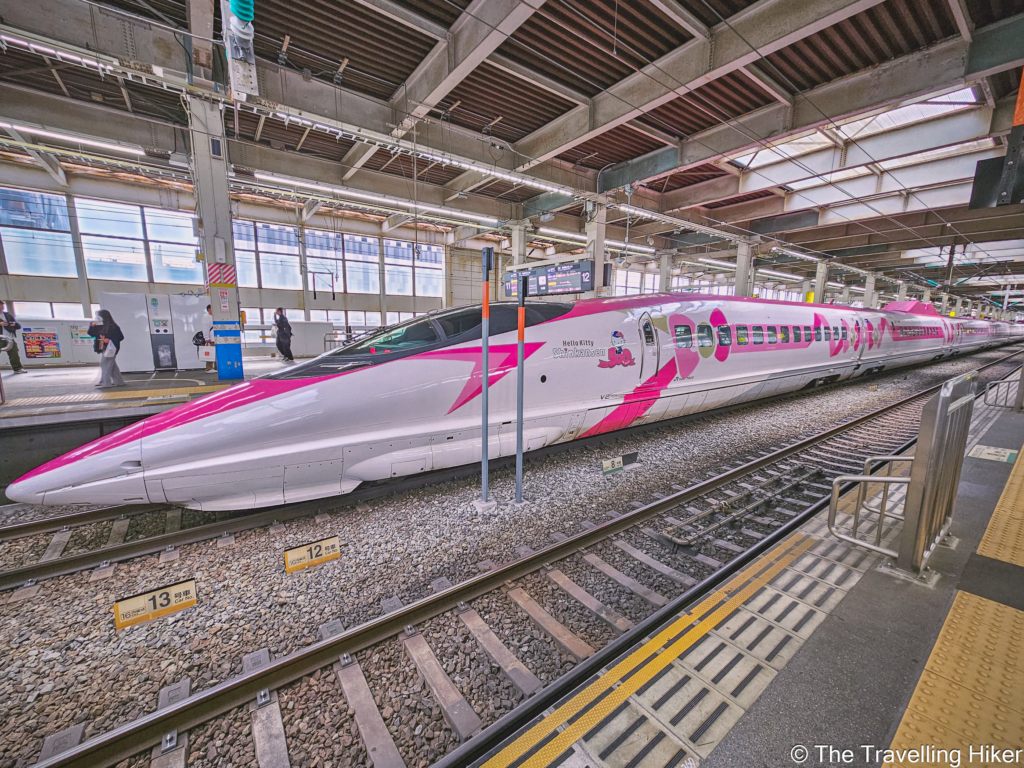
Moving around the city
Once you have arrived, the easiest way to explore this city is by using its tram network, called Hiroden. The tram network is the biggest one in the whole of Japan. If you have an IC card (such as the famous Suica or Pasmo cards), using this public transportation is very easy. Just tap it on the machine upon entering and exiting the tram and the exact price for your ride will be deducted.
Alternatively, you can walk to the different sites but they are a bit spread apart.
HOW MUCH TIME DO YOU NEED TO VISIT HIROSHIMA?
Can you visit Hiroshima in one day? Yes, in fact, I think this is the perfect amount of time to explore the city without having to rush from one point to the next. In case you didn’t know this by now, I hate having to run when visiting new places and prefer exploring at a slower pace.
Many people visit Hiroshima as a half-day trip combined with the island of Miyajima. However, I don’t recommend it unless you are only interested in visiting the Peace Memorial Park but then you would be missing on the many other charms this city has.
THE 5 PLACES NOT TO MISS IN HIROSHIMA
Here is the list of the 5 places that you should not miss in this city (in no particular order).
1. Peace Memorial Park
On the 6th of August 1945 at 8:15, the city of Hiroshima became the first city in the world to be attacked with an atomic bomb. The Peace Memorial Park was built exactly where the bomb was dropped and which at that time was the political and financial heart of the city. Today it is a place to remember the victims and to learn about this horrible event in history.
It was not an easy visit, I found myself wanting to cry at a few moments during the visit but even though it was hard, I would recommend you to visit it. Knowledge is the only thing that can prevent this from happening again.
Within the park, you have to visit the following places:
A-Bomb Dome
This is the only building that didn’t collapse after the tragic event. It is located approximately 150 m away from the epicenter and during the reconstruction of the city, it was decided to maintain it as a memory of this horrible act. To ensure it will not fall, a special reinforcement has been added to its structure.

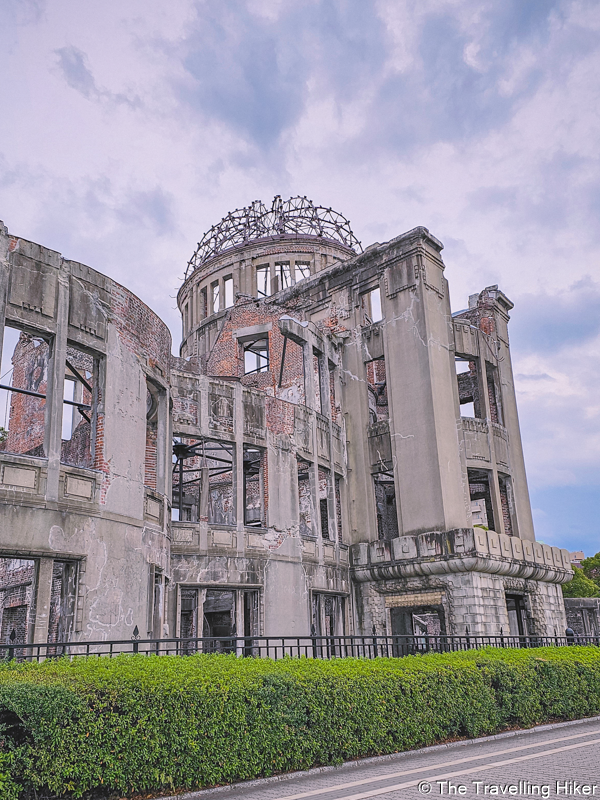
Children Peace Memorial
This is another memorial within the park that is also within the park and that is quite hard to visit without wanting to cry. This memorial remembers the story of Sadako Sasaki, a girl who was only 2 when the bomb was dropped. Due to the radiation she was exposed to, she was diagnosed with leukemia when she was 12.
While in the hospital, she started making origami cranes. According to a Japanese legend, the crane is a mythological beast that lives for over 1000 years. It is believed that if you make 1000 origami cranes, the gods will grant you a wish. Even though she managed to complete the 1000 cranes, she still passed away.
To remember her, her schoolmates created a petition to build this monument to remember all the kids who passed away due to the bomb. The monument was built with the help of many schools from several countries.

Clock Tower of Peace
This clock was built to also remember this tragic event. Every day at 8:15 am, the hour in which the bomb was dropped) it makes a sound in memory of all the victims of this tragic moment in our history.
We visited this place during the afternoon so I was not able to witness this moment but it must be very impacting.

Peace Flame
The Peace Flame was lit on the 1st of August 1964 and it will remain burning until all nuclear weapons in the world have been destroyed.
- The sculpture where the flame is burning was designed by the architect Tange Kenzo and it symbolizes two hands together at the wrists pointing to the sky.
- The fire used to light the flame was brought from Mount Misen, on the nearby Miyajima island.
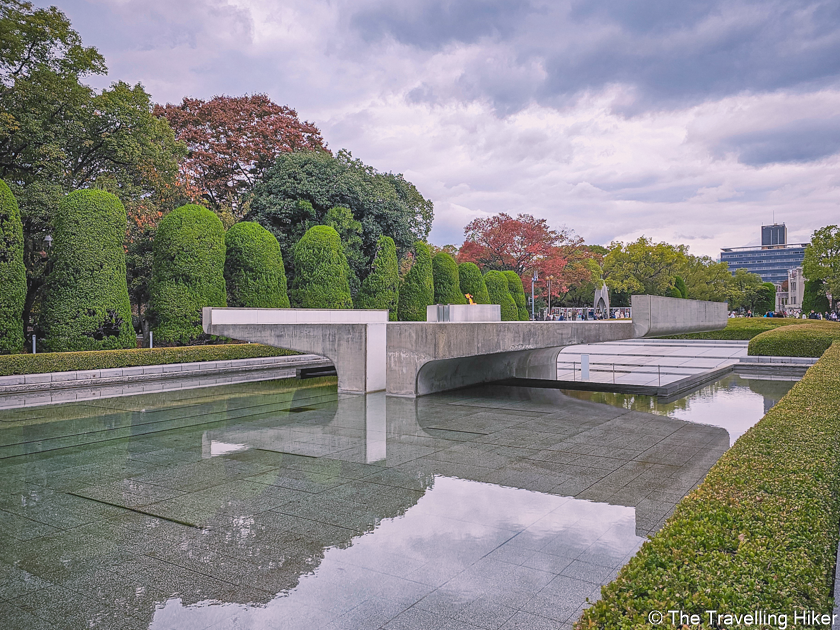
The Memorial Cenotaph
This Memorial Cenotaph was built to remember the 200.000 victims of this tragedy and was also designed by the same architect as for the peace flame, Tange Kenzo.
The Cenotaph is composed of two elements: a stone structure that contains the names of all the victims and a stone arch that gives shelter to the victim’s souls. Engraved on the cenotaph you can read a phrase that translates into: “Rest in peace, the mistake will never be repeated“.
It is quite overwhelming to see…
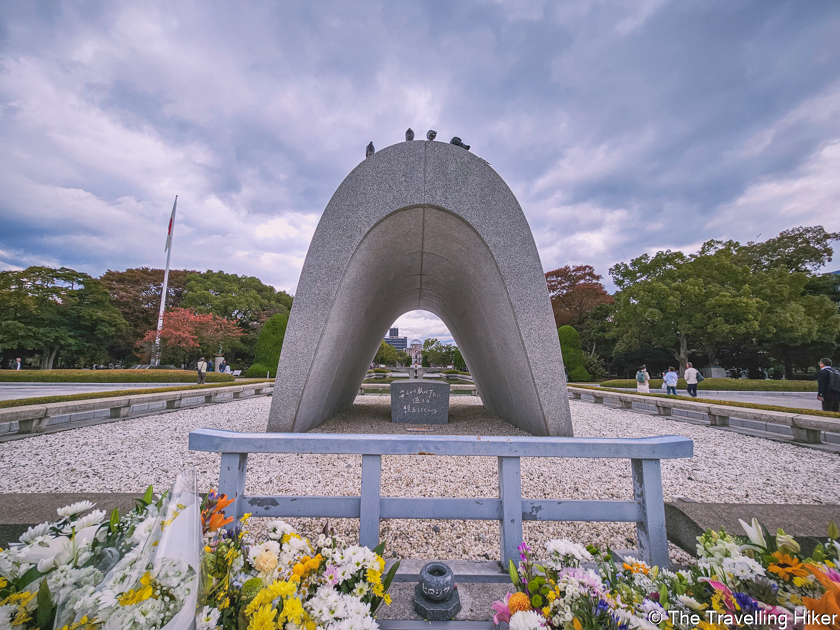
The Peace Memorial Museum
Complete your visit with the Peace Memorial Museum. Here you will get detailed explanations of everything that happened before, during, and afterwards this tragic event that took place on the 6th of August 1945. It is definitely the hardest museum I have ever visited and I will not hide that I had to skip some parts because they were too difficult for me to see. Please keep this in mind if you decide to visit this museum.
Practical information:
- The museum is open daily except the 30 and 31 December and, 3 consecutive days in February. Opening hours vary depending on the months of the year. Between March and July and September and November, it is open from 7:30 to 19:00; during August it is open from 7:30 to 20:00; between December and February, it is open between 7:30 and 18:00. Always check the official website to confirm the latest applicable information.
- Entry ticket to the museum is 200 yen.
2. Hiroshima Castle
Another must-visit place in this city is Hiroshima Castle, popularly known as “The Carp”. The original castle was built in 1589 and was rebuilt in the fifties after being completely destroyed by the A-bomb.
The castle tower is a 5 storied building and inside it, you will find a museum about the castle and the history of Japanese castles. The castle grounds are surrounded by an impressive moat.
The best part of the castle is the views you can get from the last floor. From it, you will get amazing panoramic views since it is one of the highest points in the city.
Practical information:
- Opening hours: The castle is open between 9:00 and 18:00 from March to November and between 9:00 and 17: from December to February.
- Entry fee: 370 yen/person. Always check the official website for the latest updated information.
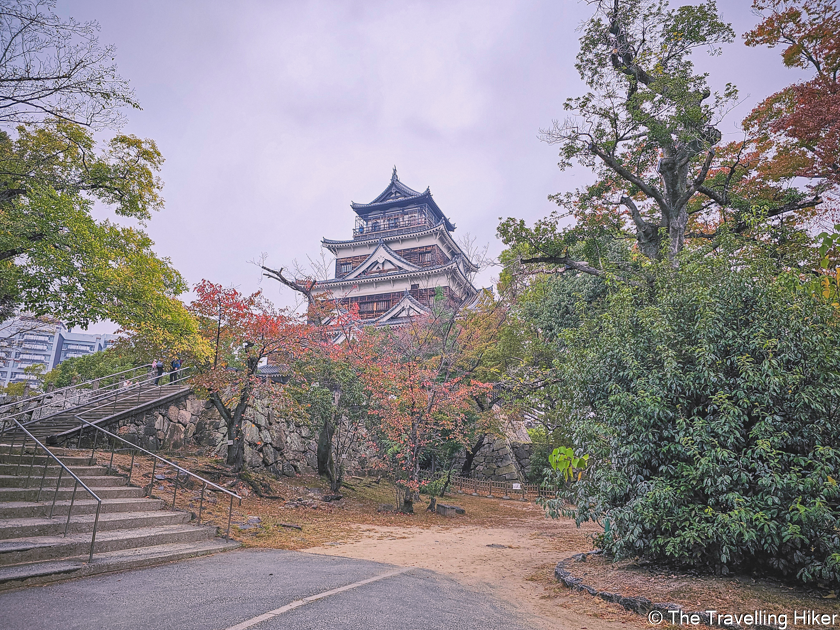

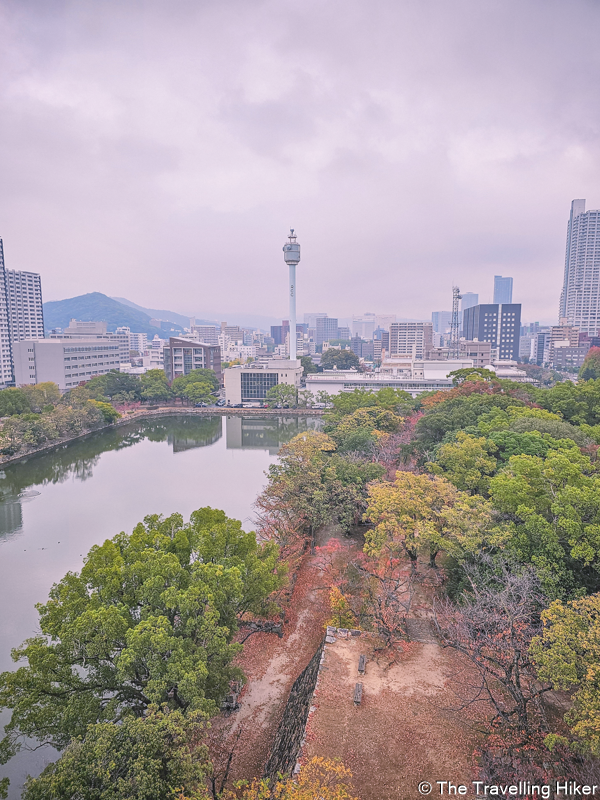

3. Shukkeien Gardens
Shukkeien translates into English as “shrunken scenery garden” and it is a very good description of the garden itself. In it, you will find miniature representations of forests, valleys, and mountains.
The garden’s main feature is a pond, around which, you can find a couple of tea houses that offer visitors an idyllic view while they enjoy some delicious tea.
Practical information
- Opening Hours: The garden is open between March and September from 9:00 until 18:00 and between October and February from 9:00 until 17:00.
- Entry fee: 260 yen/person
- Remember to always check the official site for the latest information.
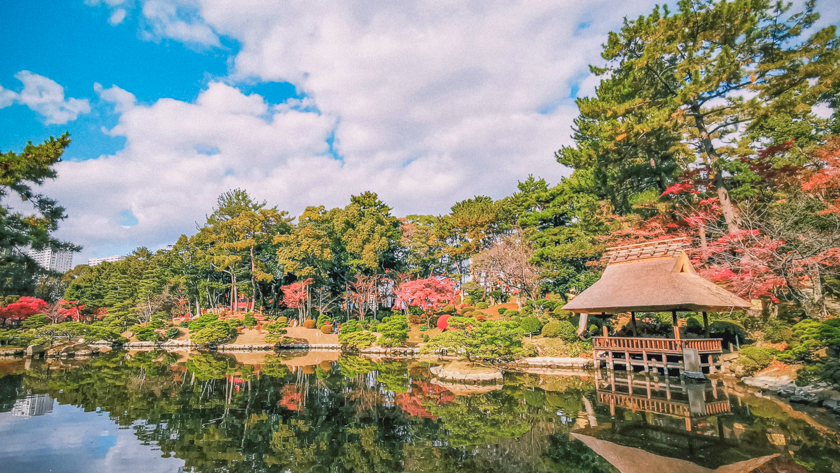
Photo from Cookie Niyompong in Unsplash
4. Mazda Museum
If you have some extra time in Hiroshima and you are interested in cars, then you have to visit the Mazda Museum. During your visit to the museum, you will get an overview of Mazda’s history, the technology used in its vehicles and the future developments they are working on.
Practical information:
- To visit the museum, you have to make a reservation in advance via the official Mazda website. This reservation can be done up to 3 months in advance.
- There are 2 tours per day, one in Japanese (during the morning) and one in English (from 14:15 to 16:15)
- The tour is completely free.
5. Okonomimura
A visit to Hiroshima is not complete without a visit to Okonomimura, a building in the center of the city with several 4 floors full of Okonomiyaki restaurants. Just walk around the building and choose the restaurant that catches your eye!
We had several okonomiyaki during our trip to Japan and I have to admit that the one we had here was, without any doubt, our favorite. I had a seafood one and David had a traditional one.


EATING IN HIROSHIMA
Here are the most famous Hiroshima local dishes.
- Okonomiyaki (Hiroshima style) is a pancake cooked on a grill with a generous amount of cabbage on top of yakisoba noodles. If you want to taste this local delicacy, make sure to visit Okonomimura, a building full of Okonomiyaki bars.
- Oysters. 60% of Japan’s oyster production comes from this region so this makes them a very typical dish. They can be eaten raw with soy sauce or grilled. I am not a fan of raw oysters, but I did try them grilled and they were delicious!
- Momijimanju. These are little cakes baked in the shape of maple leaves with a filling of sweet red bean paste dating from the 1900s. They originated in the nearby island of Miyajima but today you can buy them in Hiroshima as well.
ACCOMMODATION IN HIROSHIMA
I didn’t make a night in Hiroshima, since I chose to sleep on Miyajima island instead in an attempt to beat the crowds and enjoy the island with fewer people. However, sleeping in Miyajima is way more expensive than in Hiroshima so if you are in a tight budget, this can be a better option for you.
Here are some options I would choose for myself.
MAP WITH ALL LOCATIONS
And that’s it for this week’s blog. I hope you liked it and found it useful. Let me know what you think in the comments!
DISCLAIMER: Did you know? This blog uses affiliate partnerships. When you click and book or make a purchase through one of my blog posts, I may receive a small commission (at no extra cost to you). Thank you for supporting The Travelling Hiker!
OTHER ARTICLES ABOUT JAPAN
- PLAN A TRIP TO JAPAN ON YOUR OWN
- THE BEST GUIDE TO TOKYO’S NEIGHBORHOODS
- THINGS TO DO IN ASAKUSA
- THINGS TO DO IN CHIYODA
- BEST THINGS TO DO IN ODAIBA ISLAND
- 3 AMAZING DAY TRIPS FROM TOKYO
- HOW TO SPEND A DAY IN HAKONE: BEST THINGS TO DO
- A DAY TRIP TO NIKKO FROM TOKYO
- A DAY TRIP TO KAMAKURA FROM TOKYO
- THE 11 BEST THINGS TO DO IN TAKAYAMA
- THE PERFECT DAY TRIP TO SHIRAKAWA-GO
- THE ULTIMATE HIROSHIMA TRAVEL GUIDE
- MIYAJIMA ISLAND – THE BEST THINGS TO DO
- A DAY TRIP TO HIMEJI AND KOBE
- 3 DAYS IN KYOTO ITINERARY
- A DAY TRIP TO NARA AND OSAKA
- 4 DAYS IN TOKYO – THE BEST ITINERARY
- THE BEST THINGS TO DO IN SHIBUYA, TOKYO
- THE BEST THINGS TO DO IN MINATO, TOKYO
- THE BEST THINGS TO DO IN SHINJUKU, TOKYO
- 20 DAYS IN JAPAN – ITINERARY FOR FIRST TIME VISITORS
ENJOYED THIS GUIDE? PIN IT FOR LATER!

